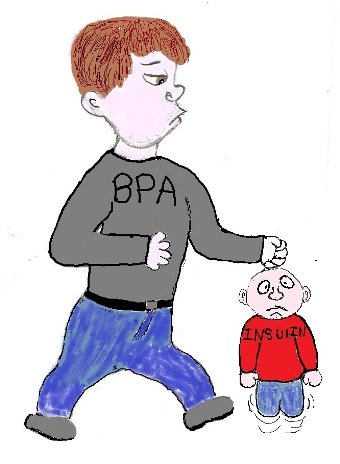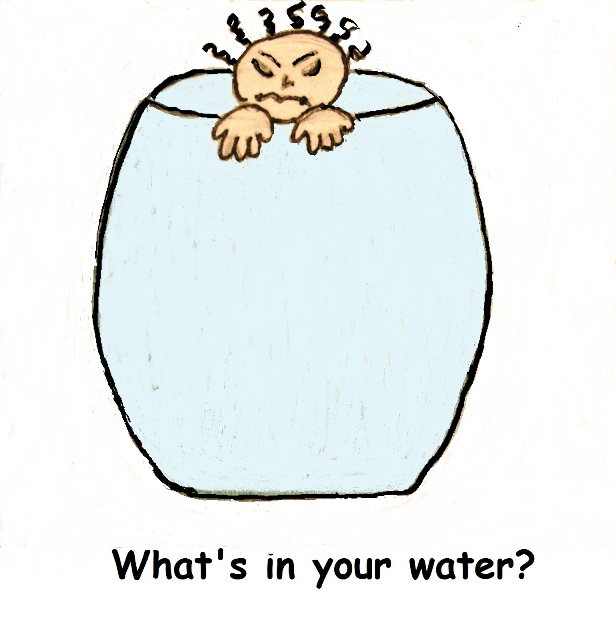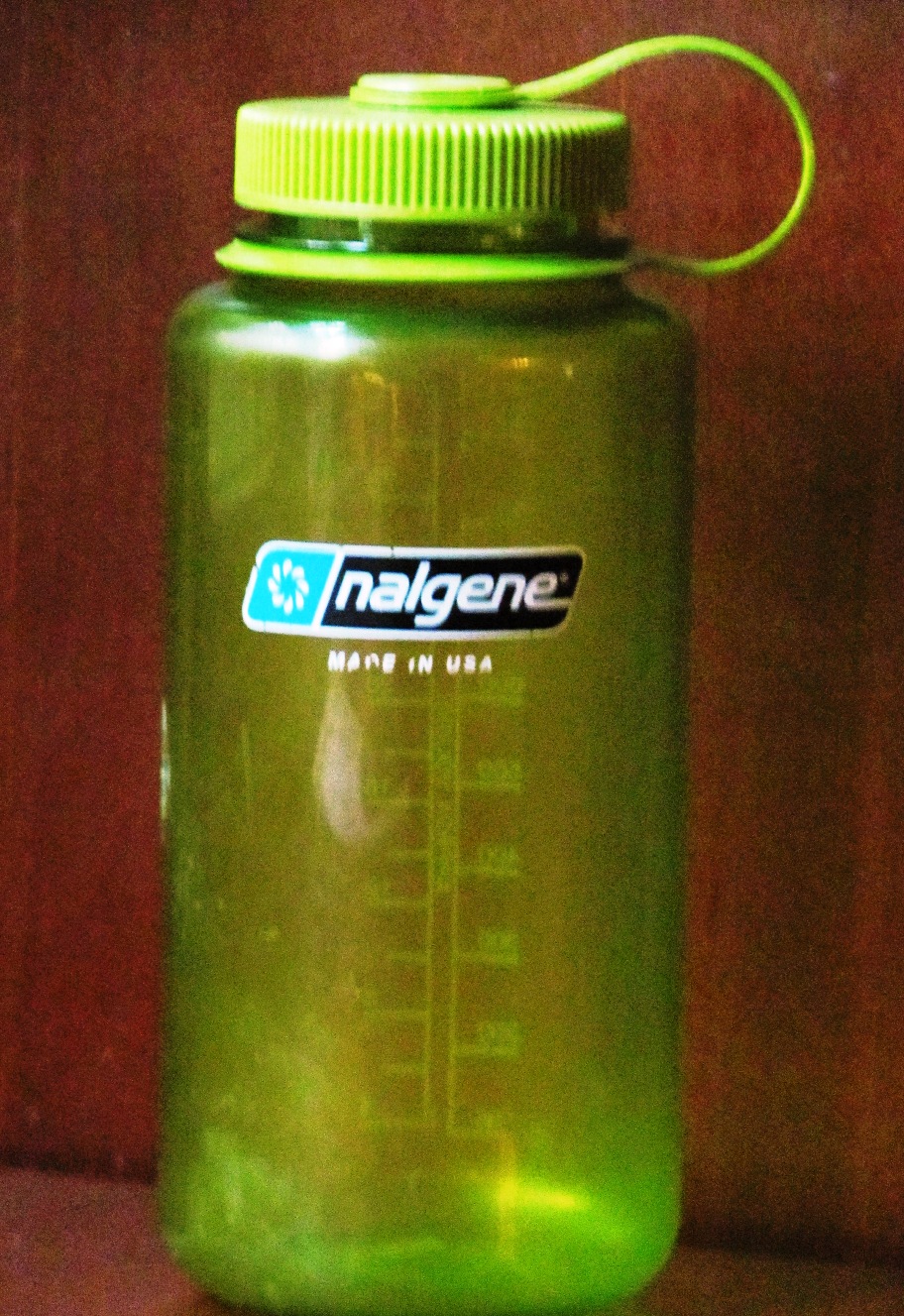- Home
- Toxic Chemicals in Food
- What Is BPA And Why Is It Bad For You
What Is BPA And Why Is It Bad For You?
If you’re wondering what is BPA and why is it bad for you, then you’re in the right place. Because, while media coverage about BPA has decreased, your exposure to this toxin has not.
And researchers continue to discover more about its health effects. If canned goods still fill your pantry shelves and you think BPA Free means nontoxic, read on.
What is BPA?
Let's start with the basics. Bisphenol A, or BPA is an industrial chemical used to make polycarbonate plastic and epoxy coatings. For a brief time in its disturbing history the chemical was considered for use in estrogen-replacement therapy!
Yep, you read that right. Before it was used in food packaging, it had potential to help postmenopausal women.
Now it lines most of the 131 billion food and beverage cans made in the U.S. annually, and in many types of plastic. More than a billion pounds of this toxin is produced in the United States every year.
How You're Exposed
Surveys by the CDC found that we're all carrying around a toxic load of bisphenols in our bodies. These chemicals enter your body from the foods you eat and the products you use.
YOU INGEST IT
Researchers agree that the main way you are exposed is through your diet.
While bisphenols can be found at low levels in dairy products, meat and and vegetables, probably because of the plastic components used to process these foods, the highest levels are found in canned foods. Drinking water from polycarbonate plastic bottles and using plastic to prepare meals can also expose you to a hefty dose.
YOU ABSORB IT THROUGH YOUR SKIN
Smaller amounts can also be absorbed through your skin from personal care and cleaning products. Although it's not an ingredient in these products, I'm guessing that BPA leaches out of the plastic containers that it's packaged in.
Also, the bisphenols in thermal paper, used to make receipts, flyers, tickets, mailing envelopes, and airplane boarding passes, can also be absorbed into your skin.
YOU BREATHE IT IN
The third way you are exposed is breathing it in. BPA, and other bisphenols like BPF and BPS have been detected in indoor dust. BPA has been found in over 90% of house dust tested by researchers.
BPA is common in your homes indoor air because it is a volatile organic compound (evaporates at room temperature) that is released from PVC and vinyl products. But researchers think inhaling and ingesting house dust isn't a main source of exposure.
Why Is It Bad For You?
Now that you what BPA is, that it’s a common chemical found in plastics and canned foods that you inhale, ingest and absorb through your skin, why should you avoid it? Why is it bad for you?
There are several reasons that BPA exposure is bad for you.

BPA Disrupts Your Endocrine System
Since bisphenols like BPA are hormonally active, they disrupt your endocrine system. Endocrine disrupting chemicals mess with your hormones, which are important chemical messengers in your body.
What makes endocrine disrupting chemicals so dangerous is that they keep your body's natural hormones from doing their job. And BPA messes with your hormones in many ways.
BPA, and BPA substitutes like BPS and PBF mimic estrogen in your body. That means your body responds to these chemicals like it would with estrogen.
But it doesn't stop there. These chemicals also block your bodies natural estrogen from doing its job (anti-estrogenic).
And they mimic male hormones like testosterone and block testosterone from doing its job. BPA and BPA substitutes also block hormone signaling in fat cells and alter levels of thyroid hormones.
Chemicals like BPA that mess with your hormones can really mess with your health. That's why over 100 human studies and well over 300 animal studies have linked BPA exposure to numerous health effects, including cancer.
For example, BPA was one of 23 biologically disruptive chemicals that were investigated by The Halifax Project, an international collaboration of scientists and doctors who are studying the connection between chemical exposures and cancer.
BPA and other chemicals were studied to determine how they contribute to the 10 "Hallmarks Of Cancer". These are the characteristics that distinguish cancer cells from normal cells.
Although each hallmark contributes to cancer, it is not until a cell exhibits the complete set of characteristics that cancer has fully developed. Exposure to BPA contributes to 7 out of 10 cancer hallmarks.
And in 2021 researchers for the first time examined if exposure to BPA and BPS impacts your brain. The scientists reported that both BPA and BPS, at common exposure levels, affects essential communication functions of neurons in mature vertebrate brains.
Health Effects Linked To BPA Exposure
|
Male and female infertility |
Heart Disease |
Neurobehavioral problems in kids |
|
Altered sex hormone levels |
Asthma | |
|
Male sexual dysfunction |
Reduced sperm quality | |
|
Depressed immune system |
Inflammation and oxidative stress | |
|
Breast cancer |
Prostrate cancer |
It Doesn't Take Much
Another reason why it is bad for you is that exposure to even small amounts of BPA and other bisphenols can affect your health. Remember, BPA is an endocrine disruptor that mimics hormones in your body.
And your body is designed to respond to hormones at low levels, whether the hormone is fake or natural. This makes many researchers question the EPA’s take on BPA.
Because the EPA believes you can "safely" be exposed to 50 ug (micrograms)/kilogram/day of BPA. That's 5,000 nanograms.
A 2013 study looked at levels of BPA, BPF and BPS in 276 different foods. Bisphenols were found in 75% of the food samples, at an average amount of 4.38 nanograms/gram of food. Another study the same year reported an average of 9.0 ng/g of food.
That means in a 12 ounce (340 grams) can, an average of 3,060 nanograms of bisphenols can leach into your food.
The researchers used the levels they found in food to estimate bisphenol exposure rates in ng/kg body weight (bw)/day for:
Toddlers - 243
Infants - 142
Children - 117
Teenagers - 64
Adults - 59
So, you're probably thinking, well shoot, that's way below the 5,000 ng daily exposure "safe" amount. Well, unfortunately, the EPA and the FDA are way behind what researchers are discovering that -
THERE IS NO SUCH THING AS A SAFE LEVEL OF EXPOSURE TO BISPHENOLS.
Hundreds of scientific studies have linked extremely small amounts of BPA, measured in parts per billion and even parts per trillion, to an increased risk of breast and prostate cancer, infertility, type-2 diabetes, obesity, asthma, and behavioral changes in children.
It Can Stick Around
The ridiculous safe level guidelines for BPA exposure are based on the inaccurate assumption that this toxin doesn't stick around in your body. Your body is supposed to break down and excrete it within 6 hours of exposure.
BUT - This toxin is lipophilic, meaning it dissolves in fats and lipids, so it could potentially accumulate in your body fat or other lipid-rich tissues. In fact, it's been found in the body fat of research rodents and humans at levels linked to health issues like insulin resistance and body inflammation.
In women, an average of 3.2 nanograms BPA/gram of fat and 8.2 ng *chlorinated BPA/g of fat has been measured. Amounts stored in fat are even higher for children - at 10.7 ng BPA/g fat and 19.4 chlorinated BPA ng/g fat.
Toxins stored in your body fat stick around and have more time to damage your health. Because fat cells act much like an endocrine organ, they are prime targets for endocrine disrupting toxins.
In fact, studies have found that BPA can program your body's fat cells to store more fat. Its effects on your body fat has also been linked to obesity and diabetes.
*BPA is a contaminant found in drinking water. Most public water supplies are chlorinated to kill bacteria, so the BPA in the water also becomes chlorinated.
You Can Reduce Your Exposure
Now that you know why BPA is bad for you, the next step is to make some changes to reduce your exposure. But BPA free plastics and cans are not the answer.
In the past several years several large food companies, like Campbell's and Del Monte have pledged to remove BPA from their can linings. And there are also lots of companies now making BPA Free plastic bottles and food containers.
Sounds great, right? All you have to do to reduce your exposure to BPA is switch to BPA-free cans and plastics.
Not so fast. Don't be lulled into thinking removing BPA will make cans and plastics nontoxic.
Because, when you remove this toxin it's easiest and cheapest for companies to put something similar back in. In this case, two other types of bisphenols- like BPF and BPS, which tests have found have the same ability to leach endocrine disrupting chemicals.
Studies on BPA Free substitutes have found that almost all commercially available plastic products tested leached estrogen-like chemicals. In some cases, these products were worse than products with BPA.
“Based on the current literature, BPS and BPF are as hormonally active as BPA, and they have endocrine-disrupting effects.” Rochester JR, Bolden AL. 2015.
A study published in 2017 tested 6 BPA alternatives and found that all six of the substitutes mimicked estrogen and promoted breast cancer cell growth more than BPA. And three of the substitutes—bisphenol AF (BPAF), bisphenol B (BPB), and bisphenol Z (BPZ)—were more potent than BPA at mimicking estrogen.
There are also other chemicals of dubious safety lining your canned food besides BPA, BPS and BPF,
A 2016 study conducted by several environmental health organizations, called Buyer Beware Toxic BPA and regrettable substitutes found in the linings of canned food, found BPA in 67 percent of the cans tested (129 out of 192). The rest of the cans were lined with either acrylic resins, oleoresin, polyester resins, or polyvinyl chloride (PVC).
Are these non-BPA linings any safer. Who knows. But they don't sound safer.
For example, acrylic resins can be made from styrene, ethyl acrylate and other acrylates, which are linked to cancer, endocrine disruption, reproductive toxicity, neurotoxicity, and respiratory toxicity. And PVC-based coatings are made from vinyl acetate or vinyl chloride, which are carcinogens.
The good news is, since about two thirds of your exposure to BPA and BPA Free substitutes comes from food packaging, you can greatly reduce your exposure by avoiding food packaged in plastic and cans.
Reduce Your Use of Plastic Food Packaging
- When buying condiments, dressings and things like nut butters and applesauce, chose brands in glass containers.
(Sometimes I have to choose between an organic product in plastic or a non-organic food in glass. Unless it's one of the "Dirty Dozen" like applesauce, I go with the item in glass.)
- Avoid drinking water from plastic bottles. Filter your water at home and use stainless steel or glass containers to drink from.
- For storing and reheating food, glass is the only way to go.
Can The Cans
A 2013 study sampled almost 300 food items and found 75% contained bisphenols, Canned foods contained higher concentrations when compared to foods sold in glass, paper, or even plastic containers. It's time to can the cans.
Reducing your exposure by ditching the can is an effective solution. But it requires a little commitment. Canned foods are so convenient. Really, who has time to soak beans overnight or make soup from scratch?
Approach ditching cans as a process. You can't do it in one day.
It took me over a year to go almost can-free. I still occasionally buy a few canned foods like tuna.
I started with the worst offenders. Tomato-based products were the first to go. The acidity in tomatoes causes high levels of BPA to leach from can liners.
Now I buy soups and tomatoes packed in glass jars or waxed cardboard (Tetra-Paks). I really like Pomi Tomatoes in cardboard and Bionaturae’s tomatoes in glass jars. There are also many soup options now available in cardboard.
I also make soup from scratch. I like to make a big pot and then freeze individual portions in canning jars.
After tomato-based canned products I started ridding my life of canned soups, fruits and vegetables ( which I rarely used because of the salt content). I switched to frozen fruits and vegetables in the off seasons.
Yes, they come packaged in plastic. But for the entire length of their journey from food processing plant to grocery store they are kept frozen. So temperature is not a factor in leaching. Also, I found one study that tested the leaching of endocrine disrupters from frozen produce bags and did not find any.
I also invested in a small chest freezer and started freezing fresh fruit in canning jars.
Canned beans were the last thing to go because of all the soaking and cooking involved in using dry. I conquered this change by cooking up huge batches of beans and freezing them in canning jars.
Prepared beans are also now available in foil pouches. And if you purchase dehydrated beans, which are cooked and then dehydrated, there's no pre-soaking needed and they cook in about 10 minutes.
Dehydrated beans can only be bought in cans and plastic containers like regular dried beans. But I believe the absence of moisture probably keeps leaching to a minimum.
Just remember, breaking the habit of buying food packaged in cans and plastic is a process that takes time and a little effort. The important thing is to find a process that works for you and just get started.








